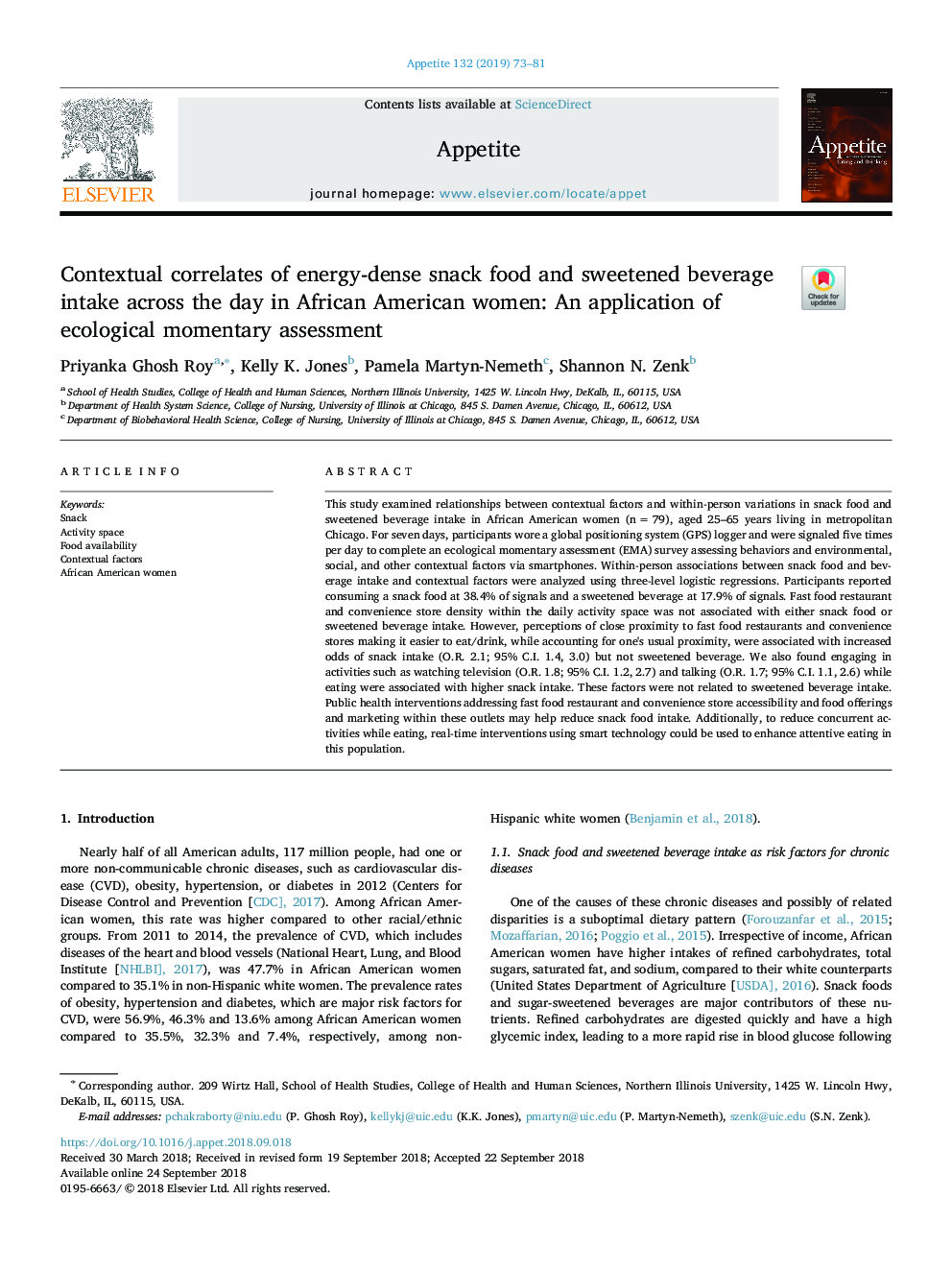| Article ID | Journal | Published Year | Pages | File Type |
|---|---|---|---|---|
| 11020573 | Appetite | 2019 | 9 Pages |
Abstract
This study examined relationships between contextual factors and within-person variations in snack food and sweetened beverage intake in African American women (nâ¯=â¯79), aged 25-65 years living in metropolitan Chicago. For seven days, participants wore a global positioning system (GPS) logger and were signaled five times per day to complete an ecological momentary assessment (EMA) survey assessing behaviors and environmental, social, and other contextual factors via smartphones. Within-person associations between snack food and beverage intake and contextual factors were analyzed using three-level logistic regressions. Participants reported consuming a snack food at 38.4% of signals and a sweetened beverage at 17.9% of signals. Fast food restaurant and convenience store density within the daily activity space was not associated with either snack food or sweetened beverage intake. However, perceptions of close proximity to fast food restaurants and convenience stores making it easier to eat/drink, while accounting for one's usual proximity, were associated with increased odds of snack intake (O.R. 2.1; 95% C.I. 1.4, 3.0) but not sweetened beverage. We also found engaging in activities such as watching television (O.R. 1.8; 95% C.I. 1.2, 2.7) and talking (O.R. 1.7; 95% C.I. 1.1, 2.6) while eating were associated with higher snack intake. These factors were not related to sweetened beverage intake. Public health interventions addressing fast food restaurant and convenience store accessibility and food offerings and marketing within these outlets may help reduce snack food intake. Additionally, to reduce concurrent activities while eating, real-time interventions using smart technology could be used to enhance attentive eating in this population.
Related Topics
Life Sciences
Agricultural and Biological Sciences
Food Science
Authors
Priyanka Ghosh Roy, Kelly K. Jones, Pamela Martyn-Nemeth, Shannon N. Zenk,
